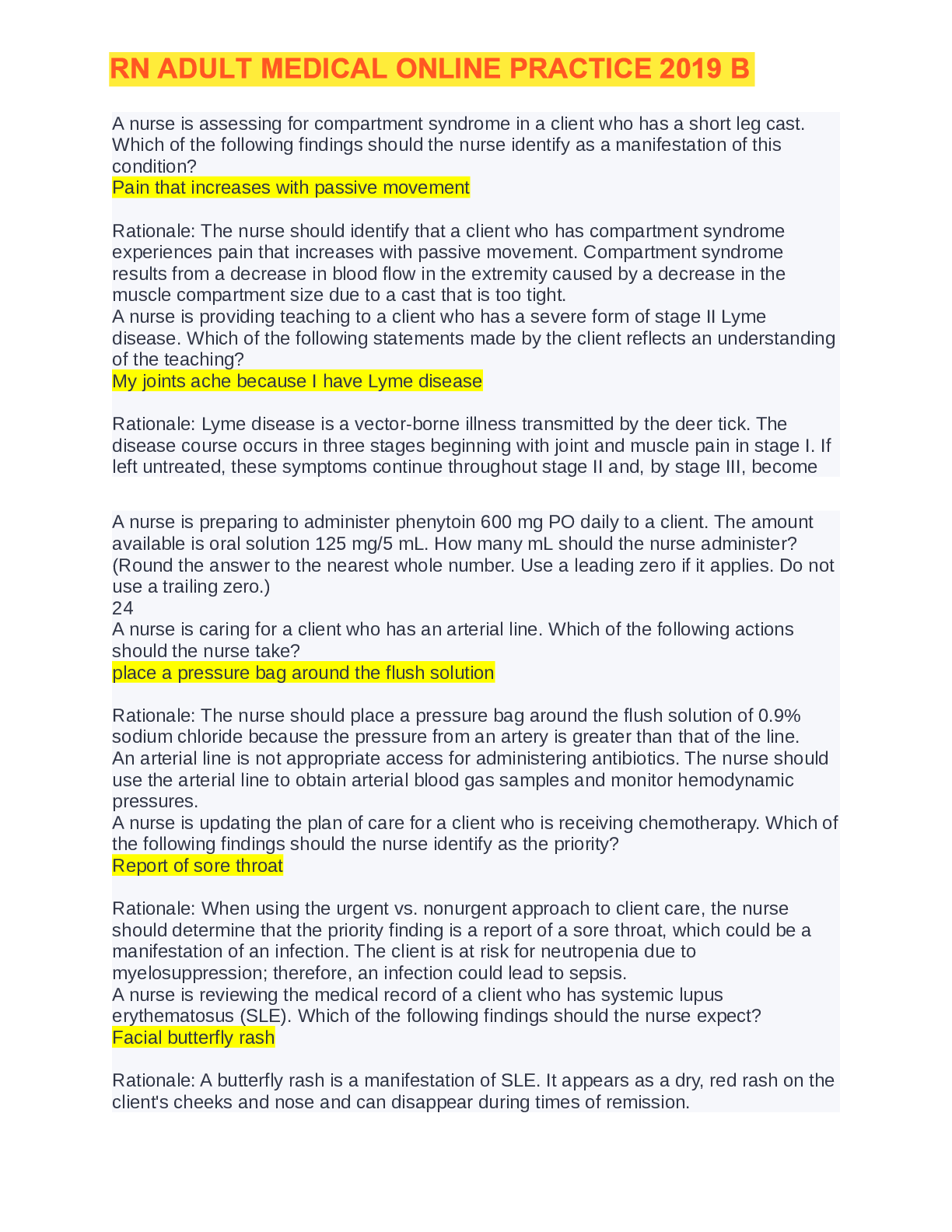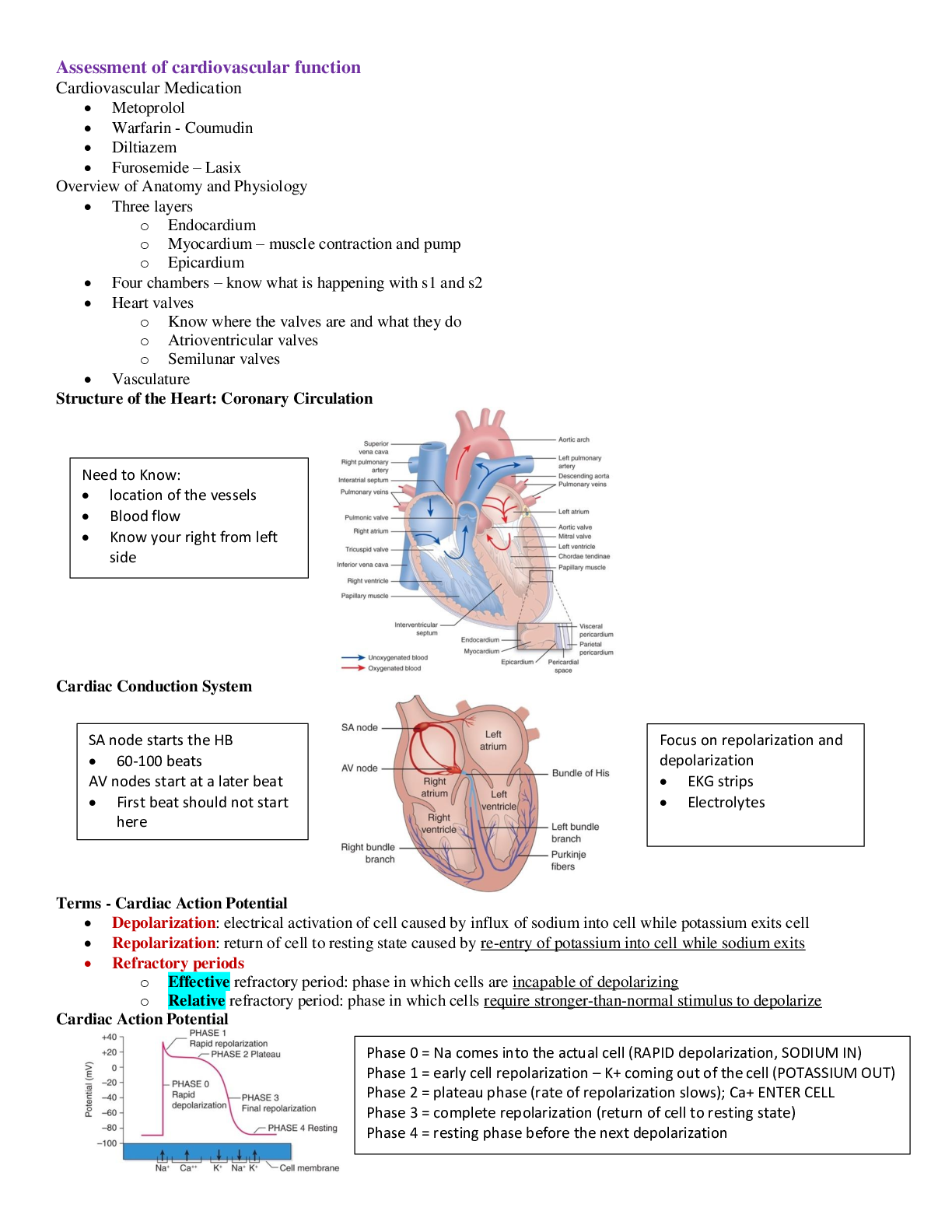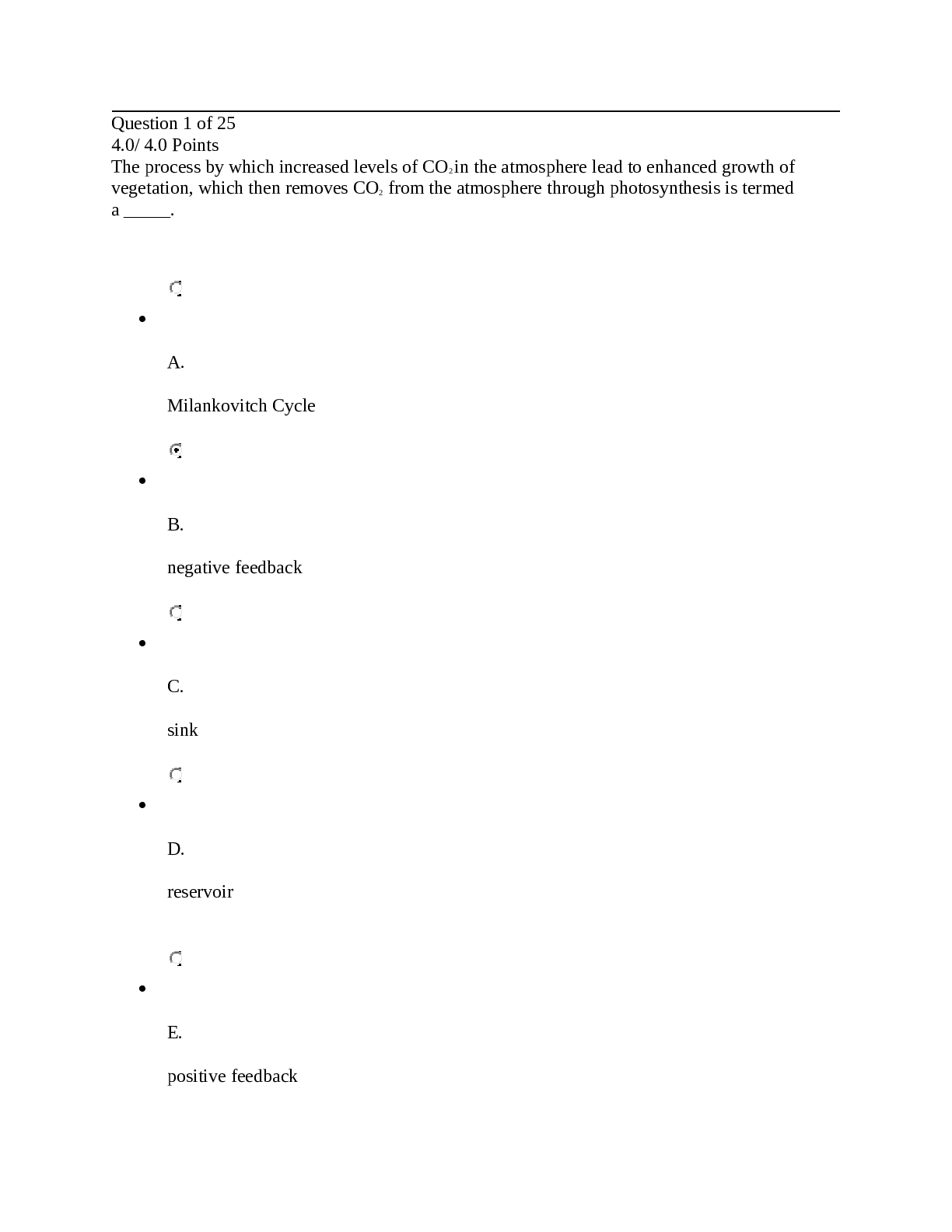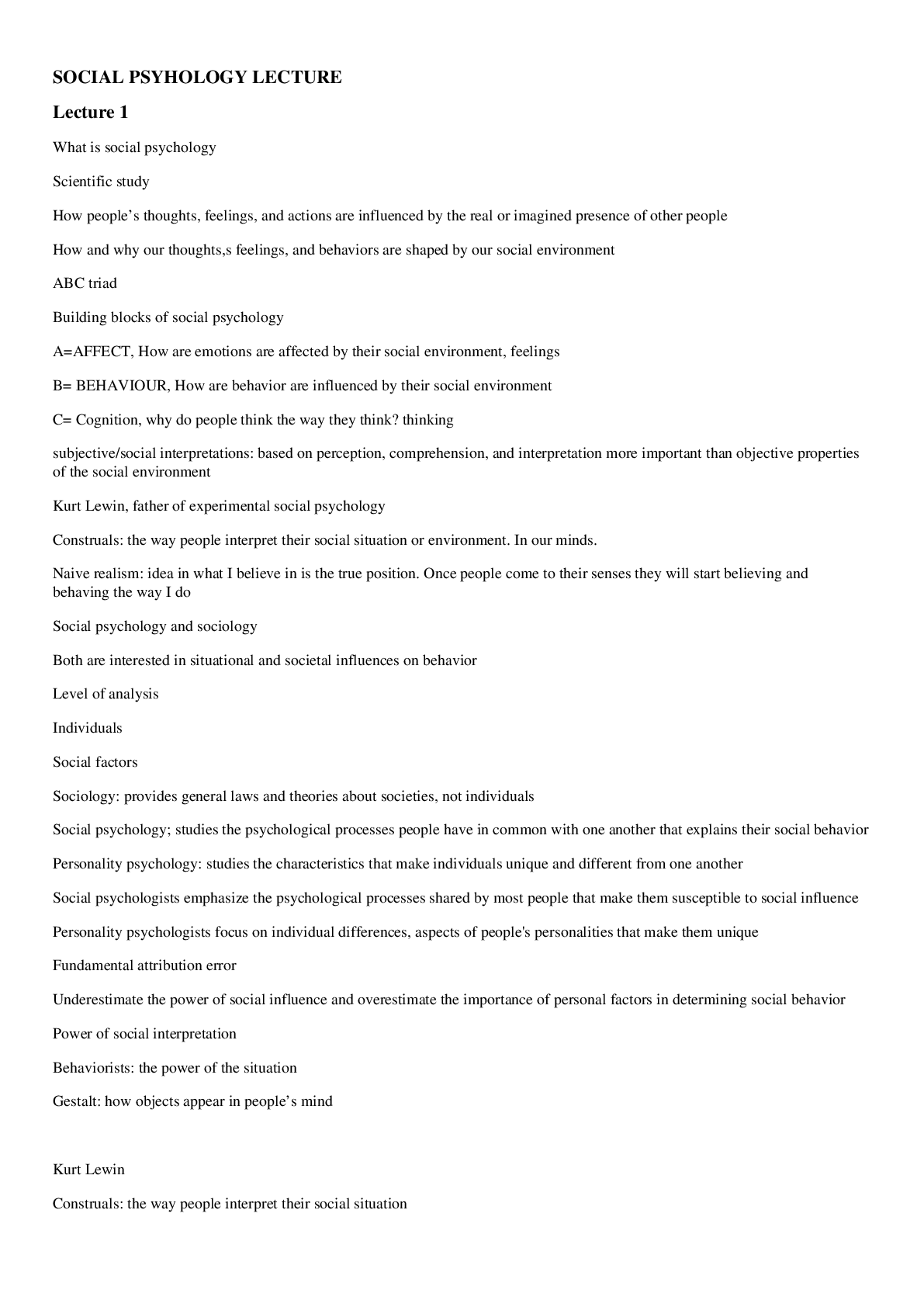SCIN 117 INTRODUCTION TO PHYSICAL GEOLOGY LAB ALL EXAMS WITH SOLUTIONS
Document Content and Description Below
Final Final Exam (timed and single access) Return to Assessment List Part 1 of 1 - Final Exam Question Pool 44.0/ 100.0 Points Question 1 of 50 0.0/ 2.0 Points For the block diagram below, which... of the following statements is (are) true? block diagram A.The igneous intrusion labeled B is older than Unit 3 B.The igneous intrusion labeled B is younger than Unit 4. C.The igneous intrusion labeled B is younger than the tilted sequence 1. Incorrect D.Both A and C are true statements. E.Both B and C are true statements Answer Key: C Feedback: Unit B cuts across (dissects) Units 1, 2, and 3, and thus according to the principle of cross-cutting relationships, it is younger and answer c is a correct statement. According to this same principle, Unit 4 cuts across Unit B and is younger, thus choice b is false. Question 2 of 50 0.0/ 2.0 Points Identify this very common mystery mineral, which is almost always present in light colored rocks and sandstones: hardness of 7, no cleavage, exhibits conchoidal fracture, glassy luster. A.calcite B.quartz Incorrect C.feldspar D.gypsum E.halite Answer Key: B Feedback: This was one of the unknown mineral hand samples in Laboratory 5 that was identified using the characteristics listed. It is also described in Appendix C of the text. Question 3 of 50 0.0/ 2.0 Points Identify this very common mystery mineral found in many igneous and metamorphic rocks: hardness of 5.5, two cleavage directions (intersecting at 60 and 120 degrees), nonmetallic luster, specific gravity = 3.3, and dark green to black color. Incorrect A.feldspar B.magnetite C.biotite D.quartz E.hornblende Answer Key: E Feedback: This was one of the unknown mineral hand samples in Laboratory 5 that was identified using the characteristics listed. It is also described in Appendix C of the text. Question 4 of 50 2.0/ 2.0 Points In what fundamental way is the process of metamorphism different from that of diagenesis and lithification? A.Metamorphism requires melting of preexisting rock. B.Diagenesis and lithification do not cause any significant changes in the rock or sediment. C.Diagenesis and lithification occur at higher temperatures and pressures. Correct D.Diagenesis and lithification occur at lower temperatures and pressures. Answer Key: D Feedback: As in diagenesis and lithification, metamorphism involves heat and pressure, but the temperatures and pressures involved are considerably higher. Some of the same physical processes that occur in diagenesis, such as compaction and recrystallization, continue during metamorphism—but in a more intense way. Question 5 of 50 2.0/ 2.0 Points Which of the following is not a significant natural cause of climate change? A.plate tectonics Correct B.erosion of the land C.solar variability D.variations in Earth’s orbit E.volcanic activity Answer Key: B Feedback: Three kinds of orbital change combine to affect Earth’s climate (eccentricity, tilt, precession). These factors interact to control how much sunlight reaches Earth at any given time Major volcanic eruptions can cause global cooling. The global oceanic circulation is directly influenced by the geographic distribution of continents and oceans basins, which in turn influence climate. Question 6 of 50 2.0/ 2.0 Points Sedimentary rocks often preserve clues about the environment in which the sediment was deposited. Which of these answers would best do that? A.synclines and anticlines B.normal faults and reverse faults Correct C.mud cracks and ripple marks D.layers of lava and ash Answer Key: C Feedback: Synclines and anticlines form well after the sedimentary rock formed, so they hold no clues about the depositional environment. Same for the faults. Mud cracks and ripple marks tell you that at one time, water was present, and that water was either drying up (mud cracks) or moving (ripple marks). This is the correct answer. The final answer is not appropriate because lava and ash are volcanic products, not sedimentary rocks. Question 7 of 50 0.0/ 2.0 Points Chemical weathering would be most analogous to which process? Incorrect A.a telephone pole leaning downslope B.leaching water through ground coffee beans to make coffee C.a truck slowly enlarging a pothole D.your sidewalk cracking in the winter [Show More]
Last updated: 1 year ago
Preview 1 out of 144 pages
.png)
Buy this document to get the full access instantly
Instant Download Access after purchase
Add to cartInstant download
We Accept:

Reviews( 0 )
$19.00
Document information
Connected school, study & course
About the document
Uploaded On
Aug 14, 2021
Number of pages
144
Written in
Additional information
This document has been written for:
Uploaded
Aug 14, 2021
Downloads
0
Views
39










; Answered.png)








